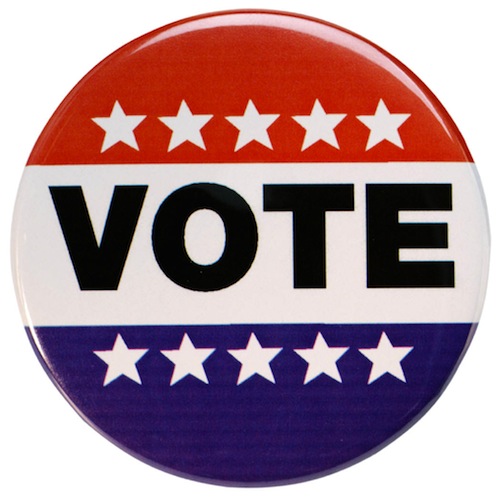Just a few random bits and pieces about turnout from the primaries. On the one hand, I think it’s great that Dems got the turnout that we did, in Harris County and around the state. On the other hand, I spent a lot of time pooh-poohing the notion that Republicans’ 1.5 million to 1 million advantage in the 2018 primaries didn’t mean anything for that November, and I’m not going to change that tune now that Dems outdrew them this March. Primary turnout and November turnout are two different things, so let’s appreciate the turnout we got this March on its own merits.
There were 2,076,046 votes cast for Democratic presidential candidates, and 2,008,385 votes cast for Republicans. The crappy election night results pages do not break these out by vote type, so I can’t tell you how many early or mail votes were cast for each candidate, which also means I can’t tell you what Election Day overall turnout looked like compared to early voting for each party. I can give you that picture for Harris County:
Year Mail Early E-Day E-Day%
======================================
2008 9,448 169,900 231,560 56.4%
2010 7,193 33,770 60,300 59.5%
2012 8,775 30,136 35,575 47.8%
2014 8,961 22,727 22,100 41.1%
2016 14,828 72,777 139,675 61.5%
2018 22,695 70,152 75,135 44.7%
2020 26,710 114,501 180,692 56.1%
Final Harris County turnout for Dems 321,903, and for Republicans 192,985. Well short of 2008, and thus of my own projections, but still pretty darned strong.
Of some interest is turnout in other counties, though again that is not to be mistaken for a deeper meaning about November. Be that as it may, Democrats saw a lot more action in the suburbs.
Democratic primary turnout was up 59% across metropolitan Dallas-Fort Worth.
OK, so the region probably isn’t flipping blue anytime soon, not with Republicans in power and an incumbent president and U.S. senator up for re-election this fall.
But something unusual is happening.
In notoriously conservative Collin and Denton counties, Democrats doubled turnout and outvoted Republicans — in Collin, by 15,429 votes.
“I think the Democrats have been working real hard the last several years,” said Denton County Republican Chairman Jayne Howell, a rural Denton County realtor.
this huge Democratic turnout will wake some people up.”Democrats saw hard-fought campaigns at the top of the ticket while Republicans only had to choose local nominees, so maybe the numbers aren’t surprising.
But overall, Democrats outvoted Republicans by 22% across the four core metropolitan counties, three of them traditionally solid red.
Republican turnout was down 43% from 2016, when the Ted Cruz-Donald Trump and Hillary Clinton-Bernie Sanders races ignited both parties.
Here are the Presidential numbers in select counties:
County 2016D 2016R 2020D 2020R
==============================================
Bexar 114,524 132,583 170,762 80,785
Brazoria 12,942 39,247 21,661 35,667
Collin 40,034 116,676 84,350 68,909
Dallas 159,086 175,122 231,688 83,304
Denton 32,506 96,060 67,092 66,621
El Paso 54,742 28,805 68,132 18,343
Fort Bend 39,206 68,587 69,540 57,212
Harris 222,686 327,046 321,903 192,985
Hidalgo 58,366 18,666 59,486 12,378
Montgomery 12,677 90,740 25,487 64,138
Tarrant 104,440 213,993 152,676 122,802
Travis 144,144 84,844 223,233 42,043
Williamson 31,141 67,392 60,677 43,868
Couple of points to note here. One is that Republicans really do get a lot of their strength in the smaller counties, since overall they had almost as many votes as Democrats in the primaries. Two, it’s very likely they didn’t have all that many races of interest, not just at the top but also fewer hot primaries for Congress, the Lege, and maybe county offices. Lots of things can drive turnout, and in their absence you mostly get the hardcore voters. And three, Travis County really punches above its weight. Respect, y’all.
I was to take a closer look at how the various candidates did around the state in future posts, but after a few minutes of poking through the Presidential numbers, I recognized it was pointless. The top counties by vote total for any candidate you looked at, from Biden to Tulsi, was basically just a recitation of the biggest counties. The best percentages for the non-Biden and Bernie candidates were generally in the very smallest counties – Bloomberg, for example, got 50% of the vote in King County. That represented exactly one vote out of two cast; Bernie got the other one. It just wasn’t worth a full post. I think there may be some more interesting info in the Senate race, but the SOS’ crappy election night returns site doesn’t have a county-by-county canvass yet. I’ll get back to that later, and of course after I get the canvass from our County Clerk, I’ll do my usual thing here as well.

